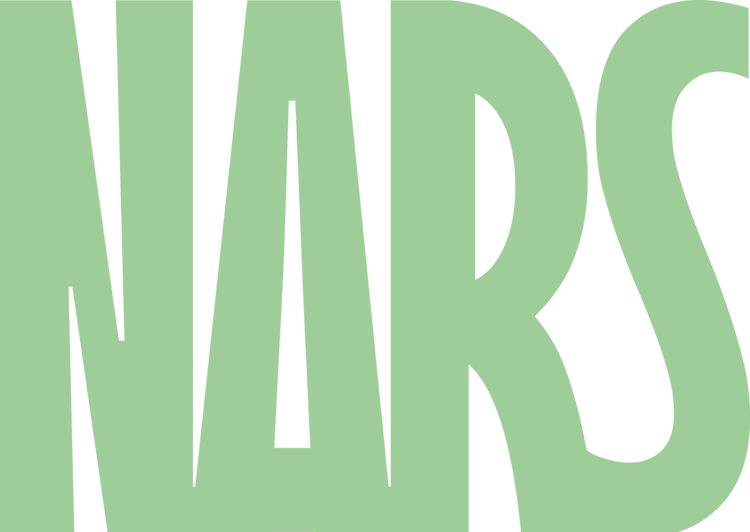RESIDENCY FELLOWSHIP
Starting in 2023, one US based applicant per season of the International Residency will be awarded a Full Fellowship, which covers all program fees for the season. A jury consisting of NARS staff and select art professionals review applications on the merit of artistic quality and level of need; studio practice; and the potential professional development and benefit from engaging with the NARS community. Only US based artists are eligible to receive the Full Fellowship. Click here to learn more about the International Residency Program, and how to apply.
Meet the Season I 2023 International Residency Fellow
Rex Delafkaran is an Iranian-American interdisciplinary artist and dancer from California. Delafkaran holds a degree in Ceramics and Performance Art from the San Francisco Art Institute. Using movement and objects she explores ideas of failure and hybridity among bodies, objects, identities and language.
We sat down with Rex to talk about her experience as a Fellow at the International Residency:
Can you tell us a little about yourself and your work?
Yes! My name is Rex Delafkaran, I grew up in Southern California and have been based in Washington, DC for the last 7 years. My practice is rooted in sculpture, ceramics, performance and dance and deals primarily with identity, objects and language, and the ways in which they correspond and fail.
What did you focus on primarily during your time at NARS?
My time in the studio has been pretty much spread across several more pressing aspects of my practice. My practice necessitates a kind of library of ready-made objects of interest and with them I can begin assembling, combining and re-tooling them. So material research and experimentation have been central to my time. Also lots of ceramic sculptural studies here and there.
I’ve also been working on a performance project based in text. I’ve been deep into researching performance and dance based movement scores, and theatrical scores which has been amazing in NY because I actually get to go see so much love performance! The texts I’m working with are from the Shahnameh, the Iranian Oral History Project, as well as the Co-Star App.
And lastly, because of the performance and language based nature of my work I have been training more rigorously in dance and have continued my preexisting study of Farsi.
Image courtesy of the artist
What effect did the studio visits and other artists in residence have on your work?
I think the visitors and fellow A.i.R. had marked impact on my work in this particular moment. The studio visitors were coming from so many different artistic and professional backgrounds, there was always something intriguing that came of the visit, and often I too would end up thinking about something in work in a new way. My fellow A.i.R. were so fun to get to know. Meeting strangers in this environment is a funny thing, and to connect through making our work alongside one another was just really inspiring and motivating. Coming to know folks’ work and becoming friends is the best. I’ve found some real gems while being here.
What advice would you give to the future residency Fellows?
I don’t know about advice, as everyone really is coming into the residency space with their own situations, but if it’s possible to take some time away from your obligations elsewhere, see all the incredible work happening in the city, and being in Sunset Park at the studio and around the other residents is the best place to be!
In what ways do you feel that the residency & in particular, the Fellowship, impacted or changed your studio practice?
Honestly, having the Fellowship allowed me to be here both in the residency and in New York for these past three months. Having the time and structure of the residency created mental space for experimentation and slowness in a way that is less possible when I am in my own studio and working full time. I also think having studio visitors encounter my work in such a generative moment was really interesting and special.
Image courtesy of the artist
Image courtesy of the artist
What was a typical day in the studio like for you?
I typically would start the day with Farsi practice while walking to NARS from the train and finish it up once I made it to the studio. I liked to keep my door open to make sure everyone knew I was around and down to chat, because I really think the cohort was the best part of the everyday in the studio. In terms of routines I feel like my practice is a little more sporadic in its daily-ness. Sometimes I would spend the day fully in clay mode, sometimes reading or drawing, and other times I would dive deep into some writing in English and Farsi - I’m working in filling a fat roll of paper with text right now for a piece and it’s taking forever!
What was an experience or moment at NARS that stood out to you?
There was a particular studio visit day toward the end when we had studio visitors who knew each other, and a larger group of us were all introducing ourselves to them to start the day. There was so much banter and collegial support and warmth between these visitors, it felt infectious! It was a wonderful A.i.R. moment to be making cute looks and funny glances throughout this visit, and it made me look forward to keeping in touch with the folks I’ve become close to in this short time.
Image courtesy of the artist
The Residency Fellowship programs are made possible by





